Search Thermo Fisher Scientific
Invitrogen
CD43 Monoclonal Antibody (eBioR2/60), eBioscience™
FIGURE: 1 / 9
CD43 Antibody (14-0431-82) in Flow
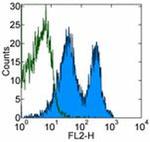
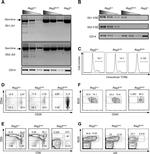
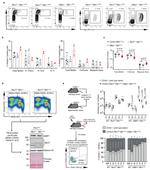
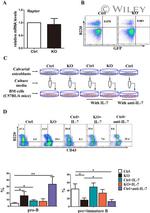
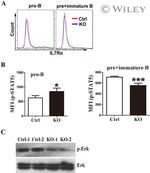
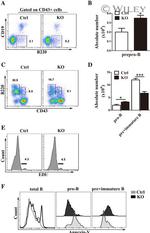
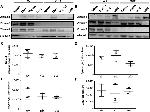
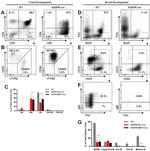
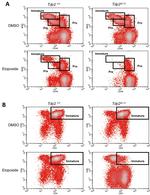
Product Details
14-0431-82
Species Reactivity
Published species
Host/Isotype
Class
Type
Clone
Conjugate
Form
Concentration
Purification
Storage buffer
Contains
Storage conditions
Shipping conditions
RRID
Product Specific Information
Description: The eBioR2/60 monoclonal antibody reacts with mouse CD43, also known as leukosialin and sialophorin. CD43 has glycoforms of approximately 115 and 130 kDa, and is expressed by an early B cell subset in BM, thymocytes and mature T cells, NK cells, myeloid lineage cells and platelets. CD43 is reported to bind to CD54 and play a role in adhesion and B cell survival.
While the S7 and 1B11 monoclonal antibody clones detect only certain isoforms of CD43, data suggests that R2/60 detects the expression of both isoforms. It has been demonstrated that R2/60 stains the majority of CD4+ and CD8+ splenocytes, as well as a significant population of CD19+ splenocytes. However, the clones S7 and 1B11 stain only CD4+ and CD8+, or CD19+ splenocytes, respectively. This suggests that S7 and 1B11 recognize distinct epitopes which are differentially expressed by splenic B and T cells, whereas R2/60 recognizes an epitope shared by both isoforms of CD43.
Applications Reported: This eBioR2/60 antibody has been reported for use in flow cytometric analysis, immunoprecipitation, and immunoblotting (WB). (Please use Functional Grade eBioR2/60 (Product # 16-0431) in functional assays).
Applications Tested: This eBioR2/60 antibody has been tested by flow cytometric analysis of mouse splenocytes. This can be used at less than or equal to 0.5 µg per test. A test is defined as the amount (µg) of antibody that will stain a cell sample in a final volume of 100 µL. Cell number should be determined empirically but can range from 10^5 to 10^8 cells/test. It is recommended that the antibody be carefully titrated for optimal performance in the assay of interest.
Purity: Greater than 90%, as determined by SDS-PAGE.
Aggregation: Less than 10%, as determined by HPLC.
Filtration: 0.2 µm post-manufacturing filtered.
Target Information
CD43 (leukosialin, sialophorin) is a transmembrane mucin-like protein with high negative charge, expressed on the surface of most hematopoietic cells. CD43 contributes to a repulsive barrier that interferes with cellular adhesion, however, in certain cases also promotes leukocyte aggregation. By interaction with actin-binding proteins ezrin and moesin CD43 plays a regulatory role in remodeling T-cell morphology and regulates cell-cell interactions during lymphocyte traffic. CD43 signaling both enhances LFA-1 adhesiveness and counteracts LFA-1 induction via other receptors. Expression of CD43 causes induction of functionally active tumor suppressor p53 protein, but in case of p53 and ARF deficiency CD43 promotes tumor proliferation and viability. CD43 appears to be an important modulator of leukocyte functions. Diseases associated with CD43 dysfunction include Wiscott-Aldrich Syndrome and Adenoid Basal Cell Carcinoma.
For Research Use Only. Not for use in diagnostic procedures. Not for resale without express authorization.
Bioinformatics
Protein Aliases: 3E8 antigen; B-cell differentiation antigen LP-3; CD43; Leukocyte sialoglycoprotein; Leukosialin; Ly-48; Lymphocyte antigen 48; Sialophorin; sialophorin gpL115
Gene Aliases: A630014B01Rik; Cd43; Galgp; Ly-48; Ly48; Spn
UniProt ID: (Mouse) P15702
Entrez Gene ID: (Mouse) 20737

Performance Guarantee
If an Invitrogen™ antibody doesn't perform as described on our website or datasheet,we'll replace the product at no cost to you, or provide you with a credit for a future purchase.*
Learn more
We're here to help
Get expert recommendations for common problems or connect directly with an on staff expert for technical assistance related to applications, equipment and general product use.
Contact tech support
